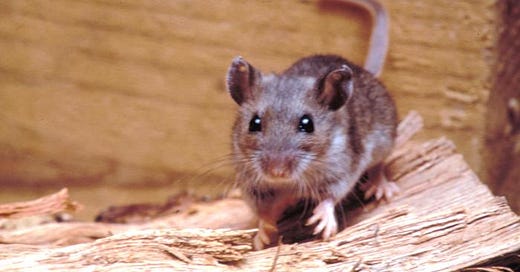Hantavirus death reported in Sierra County, California
First case reported in the county in more than 2 decades
A Sierra County, California resident recently died of hantavirus pulmonary syndrome (HPS), a disease caused by a North American strain of hantavirus known as Sin Nombre virus, which is transmitted by deer mice, according to Sierra County officials Thursday.
This is the first case of hantavirus disease reported this year in California. The last hantavirus case reported from Sierra County was in 2003.
Although it is rare, hantavirus can be very serious and deadly. About three cases of hantavirus disease are reported each year in California, and about one in three people with hantavirus disease die.
People can become infected with hantavirus when they breathe in air contaminated with the virus. Particles containing hantavirus get into the air when deer mice (Peromyscus maniculatus) urine, saliva, or droppings (feces/poop) are stirred up. The chances of this happening increase when opening or cleaning cabins, sheds, outbuildings, barns, garages, or storage buildings in rural areas that have been closed for the winter where deer mice have entered, or for people working, playing, or living in closed spaces where mice are present.
One cannot catch this virus from another person.
Hantavirus infections are typically reported in the summer months, however, this case, which occurred in March of this year, demonstrates that infection can occur year-round. Investigation of the case-patient’s residence found evidence of mice around the home.
Hantavirus illness begins with a fever and flu-like symptoms, such as headache and body aches, typically one to five weeks after inhaling the virus. Gastrointestinal symptoms such as vomiting, diarrhea and abdominal pain are common in the early part of the illness. Respiratory symptoms, including cough and feeling short of breath, are not present at first, but may develop after a few days, signaling a progression to hantavirus pulmonary syndrome and increased chances of deadly respiratory and heart failure. When people start having trouble breathing their condition may rapidly worsen and become critical. There is no specific treatment or cure for hantavirus infection, but early high-level intensive medical care can increase the chance of survival.
Diagnosis and timely transfer to higher-level hospitals is challenging as the disease can progress rapidly before diagnostic testing can be completed. Most people who become ill with hantavirus report some exposure to rodents in the preceding weeks, typically while cleaning a room or a shed that has been closed-up for some time. If you have a fever, or difficulty breathing, and have been exposed to rodents or rodent-contaminated materials, talk to a healthcare provider right away and tell them about your recent exposure to rodents (especially mice).
How can I prevent hantavirus infection?
• Seal up holes or other openings larger than ¼ inch (about the size of a pencil) where mice can get in.
• Place snap traps indoors to catch mice. Sticky traps are not recommended as mice caught in these traps can continue to shed the virus until they die.
• Store all food items in rodent-proof containers to keep mice away.
• Store woodpiles at least 100 feet away from your house to help keep rodent nesting areas away from your home.
How to decrease the risk of Hantavirus infection when cleaning rodent-contaminated areas:
• Open windows and doors of a potentially contaminated area and allow it to air out for at least 30 minutes before cleaning.
• DO NOT sweep, vacuum or otherwise stir up dust and dirt that may contain mice waste.
• INSTEAD, spray rodent carcasses (including trapped mice), nests, droppings, and other potentially contaminated items and surfaces with a 10% bleach solution or a disinfectant made to kill viruses (check the label). Allow the disinfectant solution to sit on the material for at least 5 minutes before wiping.
Mice harboring (sheltering) in vehicles may also pose some hantavirus risk, especially if mice infest the heating and air conditioning system. Inspect vehicles for rodents.
It is important to prevent rodent entry points at home and at work, although it may be challenging to completely rodent-proof some buildings. Mice may enter through very small gaps (1/4 inch or larger) under doors or around windows, and where conduits and vents pass through walls. Heating and air conditioning ducts should be periodically inspected for holes.





